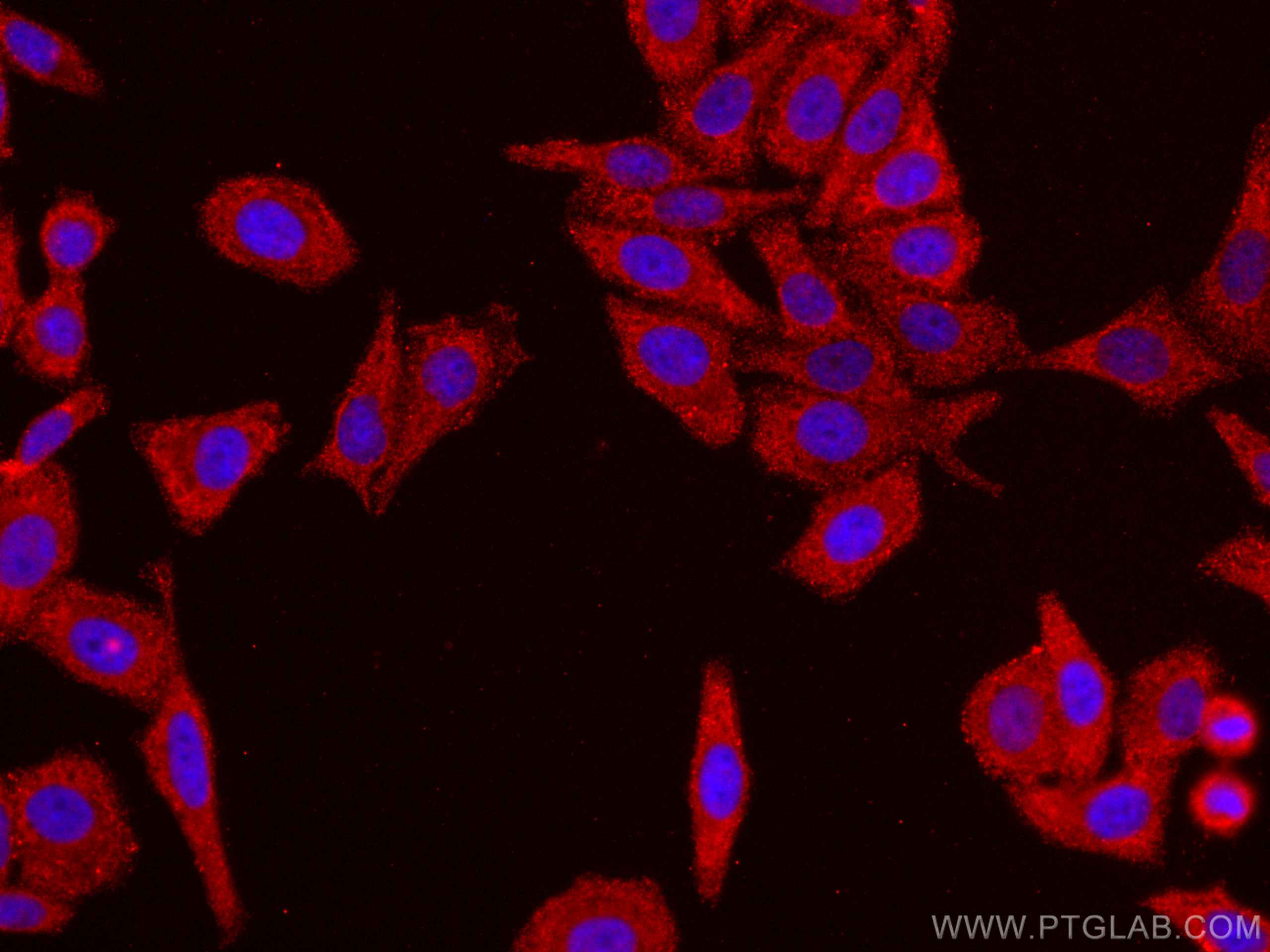验证数据展示
经过测试的应用
| Positive IF/ICC detected in | HepG2 cells |
推荐稀释比
| 应用 | 推荐稀释比 |
|---|---|
| Immunofluorescence (IF)/ICC | IF/ICC : 1:50-1:500 |
| It is recommended that this reagent should be titrated in each testing system to obtain optimal results. | |
| Sample-dependent, Check data in validation data gallery. | |
产品信息
CL594-66954 targets FGFR3 in IF/ICC applications and shows reactivity with Human samples.
| 经测试应用 | IF/ICC Application Description |
| 经测试反应性 | Human |
| 免疫原 |
CatNo: Ag26290 Product name: Recombinant human FGFR3 protein Source: e coli.-derived, PET28a Tag: 6*His Domain: 23-125 aa of NM_000142 Sequence: MESLGTEQRVVGRAAEVPGPEPGQQEQLVFGSGDAVELSCPPPGGGPMGPTVWVKDGTGLVPSERVLVGPQRLQVLNASHEDSGAYSCRQRLTQRVLCHFSVRV 种属同源性预测 |
| 宿主/亚型 | Mouse / IgG1 |
| 抗体类别 | Monoclonal |
| 产品类型 | Antibody |
| 全称 | fibroblast growth factor receptor 3 |
| 别名 | ACH, CD333, CEK2, FGFR 3, FGFR3, HSFGFR3EX, JTK4 |
| 计算分子量 | 87 kDa |
| 观测分子量 | 125-135 kDa |
| GenBank蛋白编号 | NM_000142 |
| 基因名称 | FGFR3 |
| Gene ID (NCBI) | 2261 |
| RRID | AB_2920063 |
| 偶联类型 | CoraLite®594 Fluorescent Dye |
| 最大激发/发射波长 | 588 nm / 604 nm |
| 形式 | Liquid |
| 纯化方式 | Protein G purification |
| UNIPROT ID | P22607 |
| 储存缓冲液 | PBS with 50% glycerol, 0.05% Proclin300, 0.5% BSA, pH 7.3. |
| 储存条件 | Store at -20°C. Avoid exposure to light. Stable for one year after shipment. Aliquoting is unnecessary for -20oC storage. |
背景介绍
Fibroblast growth factors (FGFs) are polypeptide growth factors involved in a variety of activities including mitogenesis, angiogenesis, and wound healing (PMID: 1847508). The human FGF receptor family, a subfamily of receptor tyrosine kinases (RTKs), comprises of four family members-FGFR1, FGFR2, FGFR3 and FGFR4 (PMID: 23900974). Each receptor contains an extracellular domain with either two or three immunoglobulin-like domains, a transmembrane domain, and a cytoplasmic tyrosine kinase domain. FGFR3 binds acidic and basic fibroblast GH and plays a role in bone development and maintenance. Mutations in the FGFR3 gene lead to craniosynostosis and multiple types of skeletal dysplasia. Due to frequent mutations in certain cancers, FGFR3 gene has also been associated with tumor progression.
实验方案
| Product Specific Protocols | |
|---|---|
| IF protocol for CL594 FGFR3 antibody CL594-66954 | Download protocol |
| Standard Protocols | |
|---|---|
| Click here to view our Standard Protocols |


